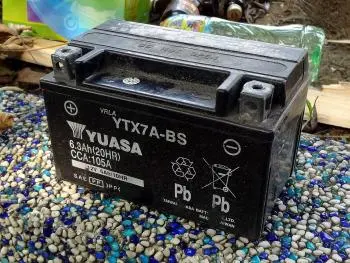
Lead-acid batteries are a type of rechargeable battery that uses a chemical reaction between lead and sulfuric acid to store and release electrical energy.
They are commonly used in a variety of applications, from automobiles to power backup systems and, most relevantly, in photovoltaic systems.
These batteries are mainly divided into two categories: starter lead-acid batteries and deep cycle lead-acid batteries. The latter are the most suitable for photovoltaic systems due to their capacity for repeated charging and discharging.
How do lead-acid batteries work?
The operation of lead-acid batteries is relatively simple but effective.
When the photovoltaic panels receive solar radiation, the charging process begins. During the charging process, a chemical reaction occurs in which sulfuric acid in the electrolyte combines with lead on the negative plates (anode), creating lead sulfate on the positive plates (cathode).
When power is needed at night or on cloudy days, the process is reversed. The energy stored in the batteries is released through a reverse chemical reaction, where lead sulfate on the positive plates is converted back to sulfuric acid and lead on the negative plates.
This generates an electrical current that can be used to power electrical devices and keep the system running.
Types of lead-acid batteries
Batteries of this type fall into two main categories: lead-acid starter batteries and deep-cycle lead-acid batteries.
Lead-acid starting batteries
Lead-acid starting batteries are commonly used in vehicles, such as cars and motorcycles, as well as in applications that require a short, strong electrical current, such as starting a vehicle's engine.
These batteries are designed to provide a significant burst of power for a short period of time to start the engine and are subsequently recharged by the vehicle's alternator while it is running.
However, they are not suitable for deep cycles: Their design makes them susceptible to damage if they are deeply discharged regularly, reducing their lifespan.
Deep Cycle Lead-Acid Batteries
Deep cycle lead-acid batteries are designed specifically for applications that require deep, repeated charge and discharge cycles, such as photovoltaic systems.
These batteries are ideal for storing energy generated by solar panels, as they can charge and discharge repeatedly without experiencing significant damage.
Key Features of Deep Cycle Lead Acid Batteries:
-
They are constructed from thicker, denser plates compared to starter batteries, allowing them to withstand repeated charge and discharge cycles.
-
They have a higher energy storage capacity compared to starter batteries, making them suitable for applications where long-term storage is needed.
-
They can last longer when properly maintained and used in applications that do not exceed their loading and unloading capacity.
Advantages
-
Cost: One of the biggest advantages is its relative low cost compared to other storage technologies, such as lithium-ion batteries.
-
Durability: Deep cycle lead-acid batteries are designed to withstand repeated charge and discharge cycles, making them ideal for photovoltaic systems that need reliable storage over time.
-
Availability: These batteries are widely available in the market, making them easy to purchase and replace if necessary.
-
Fast charging capability: These types of batteries can be charged at higher rates compared to some battery technologies, allowing for rapid recovery of stored energy during sunny days.
Disadvantages
-
Weight and size: They are typically larger and heavier compared to lithium-ion batteries of similar capacity, which may require more storage space and additional structural support.
-
Limited efficiency: They have lower charging and discharging efficiency compared to some newer technologies, meaning a small amount of energy is lost during the process.
-
Limited lifespan: Although durable, lead-acid batteries tend to have a shorter lifespan compared to some more expensive alternatives, which may require periodic replacements.
Summary
In summary, lead-acid batteries are a solid and reliable option for energy storage in photovoltaic systems.
Their affordable cost, durability and availability make them attractive for a wide range of applications, especially in regions where initial investment is a critical factor.
However, it is important to consider the disadvantages related to its efficiency and lifespan when selecting the right type of battery for a specific solar system.